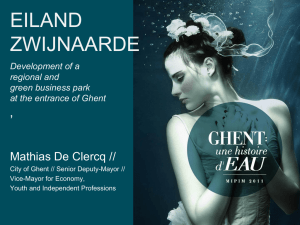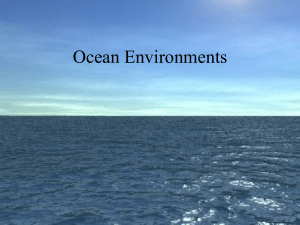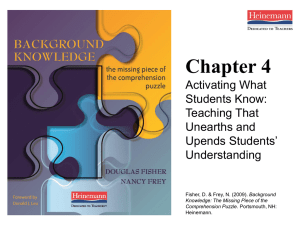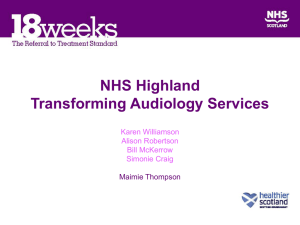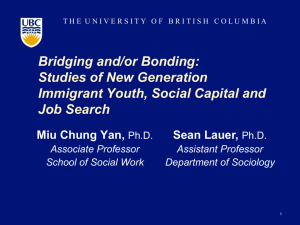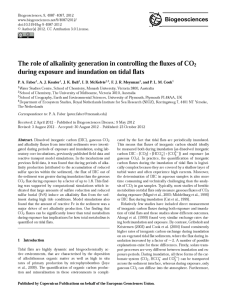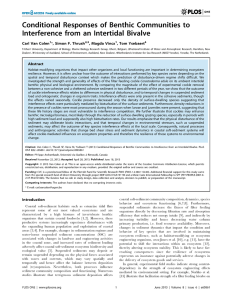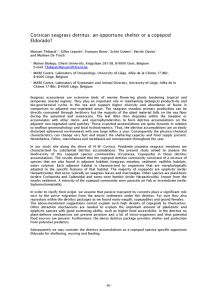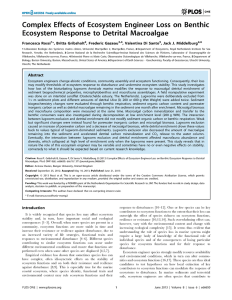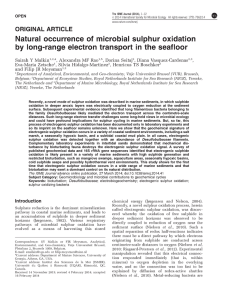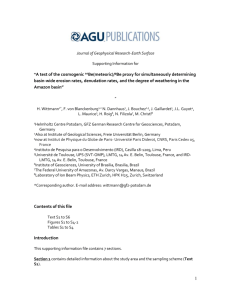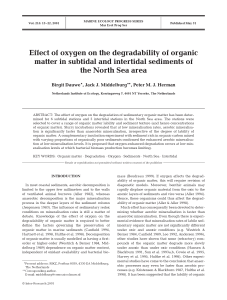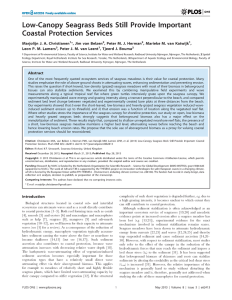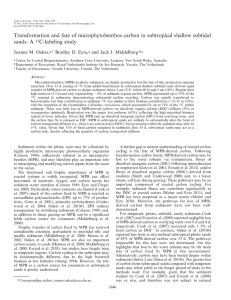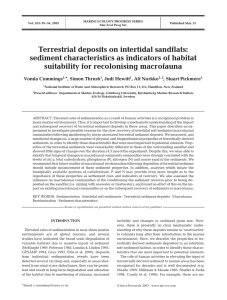Direct and indirect effects of macrofaunal functional diversity and
advertisement
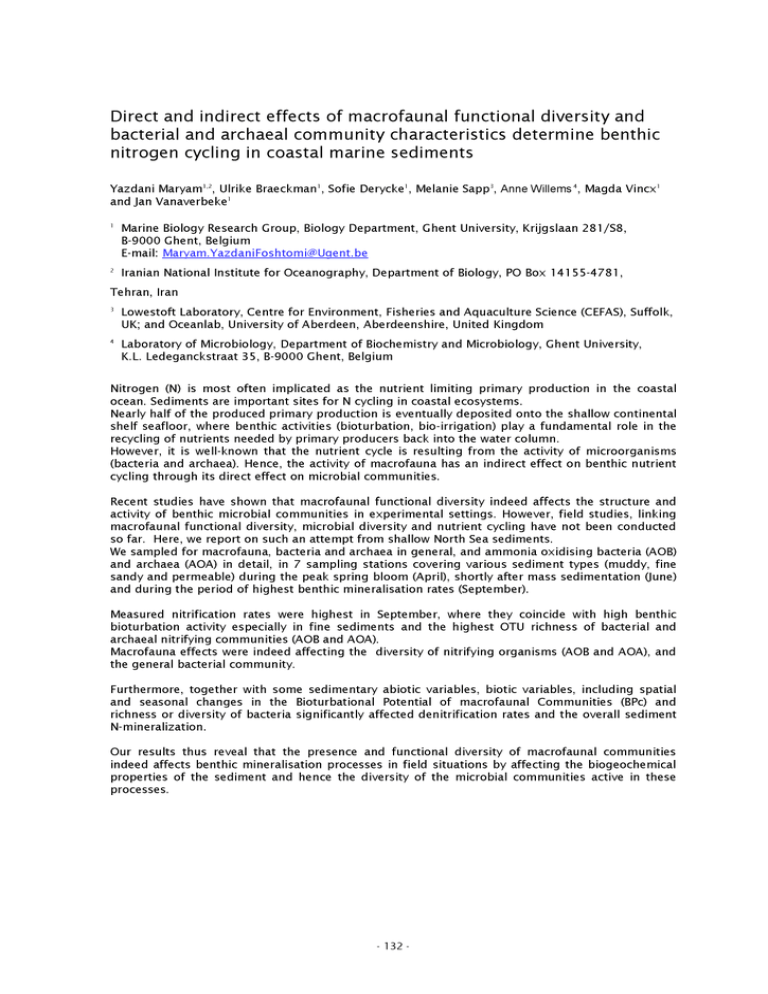
Direct and indirect effects o f macrofaunal fun ction al diversity and bacterial and archaeal c o m m u n ity characteristics determ ine benthic nitrogen cycling in coastal marine sediments Yazdani M aryam 12, Ulrike Braeckman', Sofie Derycke', Melanie Sapp3, Anne W illem s4, Magda V in cx1 and Jan Vanaverbeke1 1 Marine Biology Research Group, Biology D epartm ent, Ghent University, Krijgslaan 281/S8, B-9000 Ghent, Belgium E-mail: M arvam.YazdaniFoshtomi@ Uqent.be 2 Iranian National Institute fo r Oceanography, D epartm ent o f Biology, PO Box 141 55-4781, Tehran, Iran 3 Low estoft Laboratory, Centre fo r Environm ent, Fisheries and Aquaculture Science (CEFAS), Suffolk, UK; and Oceanlab, U niversity o f Aberdeen, Aberdeenshire, United Kingdom 4 Laboratory o f M icrobiology, D epartm ent o f Biochem istry and M icrobiology, Ghent University, K.L. Ledeganckstraat 35, B-9000 Ghent, Belgium Nitrogen (N) is m ost often im plicated as the n u trie n t lim itin g prim ary production in the coastal ocean. Sediments are im p o rta n t sites fo r N cycling in coastal ecosystems. Nearly half o f the produced prim ary production is eventually deposited o nto the shallow continental shelf seafloor, where benthic activities (bioturba tion , b io -irrig a tio n ) play a fundam ental role in the recycling o f nutrients needed by prim ary producers back into the w ater colum n. However, it is w ell-known th a t the n utrien t cycle is resulting fro m the activity o f m icroorganism s (bacteria and archaea). Hence, the a ctivity o f m acrofauna has an indirect effect on benthic n utrien t cycling th ro ug h its d irect effect on m icrobial com m unities. Recent studies have shown th a t m acrofaunal fu nctio na l d ive rsity indeed affects the structure and a ctivity o f benthic m icrobial com m unities in e xperim ental settings. However, fie ld studies, linking m acrofaunal fu n ctio n a l diversity, m icrobial d ive rsity and n u trie n t cycling have not been conducted so far. Here, we report on such an a tte m p t from shallow North Sea sediments. We sampled fo r macrofauna, bacteria and archaea in general, and am m onia o xid isin g bacteria (AOB) and archaea (AOA) in detail, in 7 sam pling stations covering various sedim ent types (muddy, fine sandy and permeable) during the peak spring bloom (April), sh ortly a fte r mass sedim entation (J u n e ) and during the period o f highest benthic m ineralisation rates (September). Measured n itrifica tio n rates were highest in September, where th ey coincide w ith high benthic b io tu rb atio n a ctivity especially in fine sedim ents and the highest OTU richness o f bacterial and archaeal n itrifyin g com m unities (AOB and AOA). Macrofauna effects were indeed affecting the d ive rsity o f n itrify in g organism s (AOB and AOA), and the general bacterial com m unity. Furtherm ore, to g e th e r w ith some sedim entary a biotic variables, biotic variables, including spatial and seasonal changes in the Bioturbational Potential o f m acrofaunal C om m unities (BPc) and richness or d ive rsity o f bacteria sig n ifica n tly affected d e n itrific a tio n rates and the overall sedim ent N -m ineralization. Our results thus reveal th a t the presence and fu nctio na l d ive rsity o f m acrofaunal com m unities indeed affects benthic m ineralisation processes in field situations by affecting the biogeochem ical properties o f the sedim ent and hence the d ive rsity o f the m icrobial com m unities active in these processes. - 132 -


